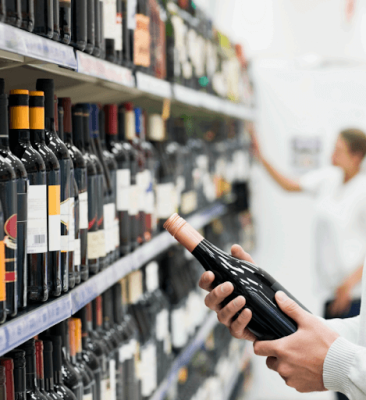U.S. Alcohol Beverage
Industry Structure
White Paper Series No. 2015-1
A Guide to Distributor Bill Backs
About our white papers: American Spirits Exchange white papers are periodic publications issued by the company to inform the industry that it proudly serves. All information is provided ‘as is’ and not intended to provide tax, legal or other advice. If you have any questions or comments about this or any other of our publications please contact our offices at 215-240-6020.
Copyright 2012. All rights reserved.
Printed in the United States of America. No part of this paper may be used or reproduced in any many whatsoever without written permission.
The following provides a basic overview of the US alcohol beverage industry. It is intended for new suppliers and international importers in order to familiarize them with those unique characteristics of the U.S. alcohol industry which impact – directly and indirectly – distribution, taxation, permitting, pricing and the general structure of alcohol sales.
INTRODUCTION
As background, upon the repeal of the 18th Amendment (“Prohibition” 1920 – 1933) the Federal Government established two principles that would uniquely shape the U.S. alcohol market. First, alcohol sales would go through a three-tier supply chain consisting of suppliers, wholesalers and retailers; generally, a company’s activities in the alcohol industry would be limited to only one of these three possible roles. Second, states would self-regulate the movement of alcohol beverages within their boundaries (that is, its distribution and sale).
Consequently, the U.S. alcohol market has become one of the most complex and heavily regulated in the world. This is due, in no small part, to the significant revenue generated through alcohol beverage taxes at all levels of government.
But the complexity of the U.S. alcohol regulations had an unexpected and exciting consequence. Within the U.S. small, boutique brands can take hold and grow in a way that is not possible elsewhere in the world.
Each of the following sub-sections is a more detailed review of a these core aspects of the U.S. alcohol system and includes a discussion as to how it impacts your sales and marketing strategy.
THE THREE-TIER SYSTEM
The U.S. government identifies three different roles in the supply of alcohol beverages: 1) supplier/importer, 2) distributor/wholesaler, and 3) retailer. By law, a supplier sells to a distributor who sells to a retailer AND it is illegal to own more than one link in the supply chain, although some specific exceptions exist.
These limited roles prevent monopolization by large companies. For example, a large spirits company may not own a restaurant chain that forces the sale of its products to the exclusion of other products. Complicating the matter is the fact that states can also impose their own limitations.
There are some exceptions to the three-tier system. For example, in some states beer and wine producers are allowed to have a restaurant co-located with the production facility (e.g. winery, brew house). For spirits, the regulations are stricter.
In addition to federal regulations, individual states have the authority to regulate the manufacture, import, transport, sales, promotion and serving of alcohol beverages. These regulations can extend down to the municipality level. As a result, what is considered acceptable practice in one state can be a violation in another. Additionally, some states may reject a company’s registration in their state based upon the company’s licenses in another state.
These fractured set of laws are generally referred to as Tied House law, representing a loose collection of federal, state and local regulations rather than a cohesive body of law.
STATE DIFFERENCES IN SALES: CONTROL VERSUS OPEN STATES
States have the capacity to regulate the transport, sale, taxation and marketing of alcohol beverages within their boundaries. This has resulted in a fractured distribution system across the U.S.
Primarily, states are classified as either Open States or Control States based upon the distributor- and the retail-sales channels.
- Open States have privatized retail sale of alcohol.
- Control States have state government owned and operated distribution and retail systems within their boundaries. Control States are subdivided into bailment and non-bailment, based upon whether payment for product occurs at the time of invoice or at the time of sale to an end consumer.
- Open States have privatized retail sale of alcohol.
As with most regulations in the U.S. alcohol beverage industry, there are exceptions that include: a) states being both open and control, distinguished at the local level; and b) a state having an open retail system for some types of alcohol beverages (e.g. beer) but a controlled retail system for others (e.g. wines versus spirits, or wines of a certain alcohol percentage).
A FRACTURED WHOLESALE NETWORK
Wholesalers are limited by state boundaries or municipality boundaries within a state. Consequently, every time a supplier seeks to expand its product’s distribution into additional states, the brand needs to be registered with the state, an appropriate wholesaler needs to accept the product into their sales “book” and a wholesaler contract needs to be negotiated.
As a result, a national expansion plan requires re-inventing distribution in each state. There is no such thing as a national wholesaler in the United States. A few of the large distribution companies have multi-state footprints, but these are really state-level, separate companies under a common name. Each state level company makes its own decisions. Although you will hear of national contracts with the largest distributors, the fine print acknowledges that each state-level wholesaler has some degree of autonomy.
Consequently, power has consolidated at the wholesaler level within the U.S. Obtaining distribution is the single greatest challenge faced by an emerging brand; obtaining attention by your wholesaler once you are signed is the second greatest challenge. Put simply, wholesalers have thousands of SKUs in their book and the titan brands pay the bills (and therefore get a lion’s share of attention).
WHO REGULATES THE U.S. ALCOHOL BEVERAGE INDUSTRY
There is a formal and informal regulatory system in the United States. Formally, four federal bodies regulate various aspects of the alcohol beverage industry:
- FDA. The FDA defines what is considered safe and acceptable standards for products offered for sale in the U.S., including the production facilities.
- TTB. The TTB sanctions alcohol beverage products for sale ensuring that they are generally regarded as safe and properly labeled according to strict guidelines defined by the federal government.
- ATF. The ATF is the enforcement arm of the government for federal alcohol law violations.
- FTC. The FTC oversees and regulates the marketing and advertising materials of alcohol beverage companies, according to strict federal guidelines.
As discussed above, states typically have liquor control boards or authorities who work on alcohol beverage specific issues, frequently in conjunction with their state department of revenue.
Finally, the industry is strongly self-regulated. DISCUS is an oversight body made up of industry participants which serves as an intra-industry watchdog group, principally concerned with the sale and marketing of alcohol beverages. Similarly, Wine Institute publishes advertising standards for wine.
The American Spirits Exchange Ltd.
We believe that success is measured in terms of our clients’ growth. We bring a contemporary, best-practice approach to a deeply historical industry. Our clients don’t just beat their competitors, they change the rules of the game.
Who we work with
Our clients are typically visionary leaders with bold, forward-thinking strategies. Whether emerging or multi-national, domestic or international they eschew the status-quo.
What we do
We help companies save money while increasing their sales focus;, the result is increased case sales and sustained corporate growth. We provide a permitted foundation and take responsibility for streamlining purchase order processing and compliance. Where appropriate, we make strategic and operational recommendations to help them get more out of their business model.
How we do it
We are part of your team. We focus on practical actions that drive your business forward. We get our hands dirty.



